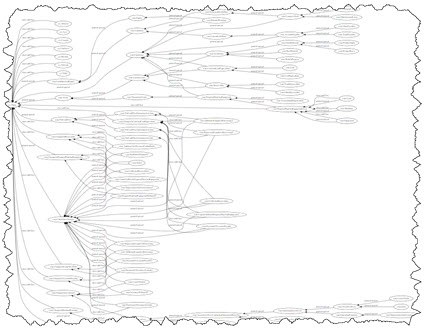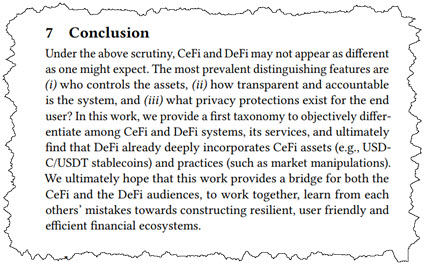BLOG: Digital Financial Reporting
This is a blog for information relating to digital financial reporting. This blog is basically my "lab notebook" for experimenting and learning about XBRL-based digital financial reporting. This is my brain storming platform. This is where I think out loud (i.e. publicly) about digital financial reporting. This information is for innovators and early adopters who are ushering in a new era of accounting, reporting, auditing, and analysis in a digital environment.
Much of the information contained in this blog is synthasized, summarized, condensed, better organized and articulated in my book XBRL for Dummies and in the chapters of Intelligent XBRL-based Digital Financial Reporting. If you have any questions, feel free to contact me.
Entries in General Information (257)
Resources
Financial statements tell a story. It is a milestone in an accountant's career when the accountant can weave together a logical, cogent, true and fair narrative from information provided and tell a story about an economic entity in the form of a financial statement. With the ability to perform that task, an accountant has achieved accounting literacy.
That is precisely what an accountant creating an XBRL-based report must do. But instead of doing this with Microsoft Word, Excel and typing a bunch of stuff into applications that don’t understand accounting; with XBRL-based structured information, accountants need to learn a new approach to telling stories about an economic entity.
Authors Dean Allemang and James Hendler say it well in their book Semantic Web for the Working Ontologist (page 1):
“In the hands of someone with no knowledge, they can produce clumsy, ugly, barely functional output, but in the hands of a skilled craftsmen, they can produce works of utility, beauty, and durability. It is our aim in this book to describe the craft of building Semantic Web systems.”
A brick wall is made of exactly two things: bricks, mortar.
But a brick wall created by a master craftsman, or mason, and a brick wall created by a “weekend warrior” with no knowledge of masonry will be very different. Master craftsmen are created and that process takes time and effort.
The term “mason” can be further broken down in to more detailed distinctions. In the Middle Ages, the terms rough masons, row masons, stone setters, layers and freemasons were used to signify differences in skills. Freemasons who were the most skilled were paid the best .
Masons built our physical world. Knowledge engineers working with subject matter experts will construct our digital world.
Financial reports are rich with associations. Representing that rich set of associations in the form of machine-readable metadata creates the capabilities for software applications that can read and understand those associations to perform what seems like magic.
Information wants to be free from imperfections. Good tools in the hands of master craftsmen using good methods can produce information that is understandable, useful, durable, and perhaps even beautiful and elegant truly sets information free!
Even smart software applications appear “dumb” if they are not provided the right information. “Dumb” includes information that is wrong, contradictory, inconsistent, disconnected, and is not otherwise synchronized. On the other hand; properly organizing information enables sophisticated software applications to perform to their potential.
This information is provided in the form of machine-readable models and other metadata that help accountants perform their work effectively. How exactly to create those associations and what the associations might look like are up to debate. Regardless of how that debate might turn out; associations are important.
Below is a set of associations from a rather small financial reporting scheme:
David Weinberger points out in his book Everything Is Miscellaneous two very important things:
- That every classification scheme ever devised inherently reflects the biases of those that constructed the classification system.
- The role metadata plays in allowing you to create your own custom classification system so you can have the view of something that you want.
Mr. Weinberger continues in his book by pointing out the notion of the three orders of order:
- First order of order. Putting books on shelves is an example the first order of order.
- Second order of order. Creating a list of books on the shelves you have is an example of second order of order. This can be done on paper or it can be done in a database.
- Third order of order. Adding even more information to information is an example of third order of order. Using the book example, classifying books by genre, best sellers, featured books, bargain books, books which one of your friends has read; basically, there are countless ways to organize something.
Associations and classification are two very important tools of the information age. Those that understand how to use tools and techniques and create this metadata, those who are craftsmen and perhaps the information age equivalent to a freemason will construct our digital world.
* * *
My blog archive has 1,692 posts. My suggestion is that you start here if you are working to understand. I have tried to summarize everything important from this blog into the document(s) Mastering XBRL-based Digital Financial Reporting. Eventually, everything will end up there. The following are additional helpful resources that have not yet been incorporated into those documents:
- Open University
- Private Equity
- Fluree Web3 Data Platform
- TerminusDB
- AnzoGraph Database
- Data Fabric
- Jupyter
- Logic
- Accounting is being outpased by financial innovation
- Accounting has been outpaced by financial innovation, LibraTax
- Accountants and auditors are financial doctors. We have just given them penicillin.
- The Future of Accounting (demand, Marysville University)
- The Future of Accounting (predictions, Marysville University)
- Accounting Using Tokens (Video)
- Understtanding Financial Statements (Slides)
- History of Accounting (Video)
- Triple-entry accounting (bookkeeping)
- Triple entry accounting (video)
- Blockchain (the book)
- Token Economics Video Playlist
- Web3
- Excellent Explanation of Bitcoin (Video)
- Decentraizing the Semantic Web: Who will Pay to Realize it?
- Harvard Business Review: What is Web3?
- "In theory, a blockchain-based web could shatter the monopolies on who controls information, who makes money, and even how networks and corporations work."
- "This is the vision of the read/write/own web [Web3]."
- "NFTs can operate on a smaller scale than coins because they create their own ecosystems and require nothing more than a community of people who find value in the project. For example, baseball cards are valuable only to certain collectors, but that group really believes in their value."
- "We’ve heard all this before, and we’ve seen how earlier episodes of Web3 euphoria fizzled. But that doesn’t mean it should be written off entirely. Maybe it booms, maybe it busts, but we’ll be living with some form of it either way. What version — and how your company responds — could determine the future of the digital economy and what life online looks like for the next internet epoch. For now, that future is still up for grabs."
- Artificial Intelligence
- Measuring Metadata Quality
- Architecture
- Papers
- ACFR Taxonomy (State and Local Governement Financial Reporting)
- Australian Accounting Standards
- Key Auditing Matters (KAMs)
- Symposium
- Audit framework for financial institutions
Syncfusion Software GUI/UX
Syncfusion has some excellent demos of software interfaces for cloud-based software applications. You can demo every control. You can look at and run the code on Stackblitz.
Visirule is an application created using Syncfusion controls.
Pivot table controls. This is a comparison of pivot table controls.
Things Accountants Will Likely Get Wrong about Transformation to Digital
Successful business models are built; overcoming adversity; then business models are undone. Burroughs is a perfect example of this. There are many others, all one needs to do is look.
It would be wishful thinking to believe that the institution of accountancy in whole or in part can escape the fate of the change from analog to digital. Change will come. There are two possible types of change: change by replacement (total disruption) and change by reform (adapt what exists). Likely the change will be a combination of replacement and reform.
The Great Upheaval, on pages 208 and 210, provides a summary of commonalities that stand out which industries get wrong during the transition from analog to digital. Here are the common patterns:
- Clinging tenaciously to business models and products too long, even after they were broken or even longer
- Making minimum alterations to business models in a piecemeal fashion by reform, repair, adaption
- Making knee jerk piecemeal responses to adapt rather than making holistic organizational changes
- Do not recognize the coming threat that digital technology posed nor the magnitude of that threat
- Change happened behind their backs while they were busy doing business as usual
- Half-heartedly throw a flurry of puny remedies and failed attempts to find solutions at the wall; but nothing sticks; leading to the belief that meant the market preferences current practices and approaches
- Thinking myopically and focusing on the short term rather than thinking strategically and thinking longer term
- Favoring financial cost cutting rather than investing in the future
- Not being aware of the emergence and growth of potential competitors
Things change; that is a given. No one can predict the future, not even me. But because it is unclear what will happen is not license to be ignorant of what is going on. "Digital" is not software; it is a mindset. This transformation we are in the midst of is not about technology, it is about talent.
The New Map of Life
The New Map of Life is a report published by The Stanford Center on Longevity of Stanford University. The findings of the report is this:
In the United States, as many as half of today’s 5-year-olds can expect to live to the age of 100, and this once unattainable milestone may become the norm for newborns by 2050. Yet, the social institutions, norms and policies that await these future centenarians evolved when lives were only half as long and need updating.
Basically, what is happening is that lives are getting longer but the only change is that we are tacking those additional years to the end of life and not adjusting any other phases of our lives.
Read the report and watch this short video, it will change your perspective. This is about living higher quality lives.
Comparing Centralized to Decentralized Finance
This article, CeFi vs. DeFi, Comparing Centralized to Decentralized Finance, helps you understand what decentralized finance actually means.
The article defines finance as the process that is involved in the creation, management, and investment of money. Finance basically links those that need money with those that have money.
The authors seem to believe that CeFi and DeFi will co-exist. Here is the paper's conclusion:



